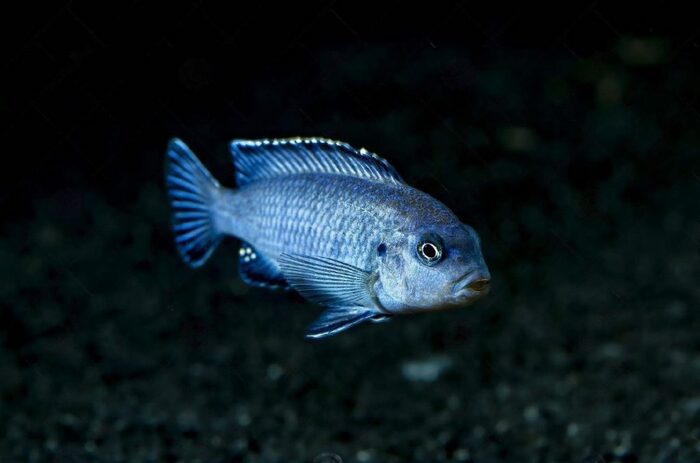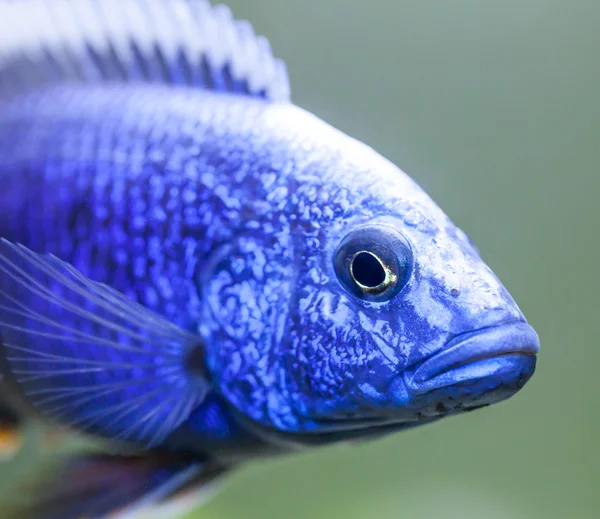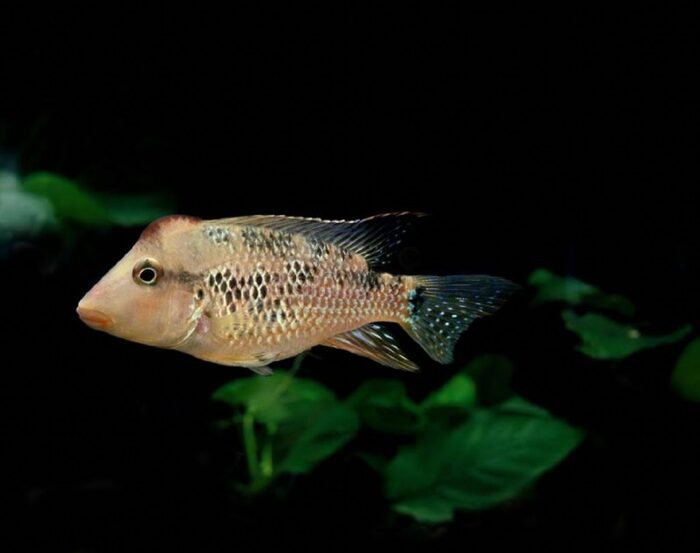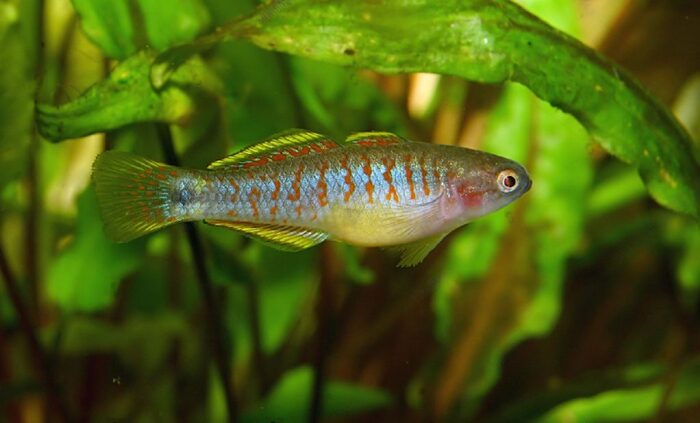Introduction
Have you ever wondered about the number of fish names beginning with E in the wild? We did; hence we explored the aquatic realm to see what the numbers looked like.
We wrote this article based on what caught our attention and what we saw from the content we researched to share our results with you to help you learn more about these fish names.
We’ve featured a wide range of saltwater and freshwater fish, some suitable for aquariums and others especially adapted to the wild. The difficult-to-read words within parentheses beside each fish name are Latin and comprise the scientific fish name.
These Latin names are utilized all across the globe and might help you identify a fish.
Several distinct fish names share the same genus name but have separate species names. The genus typically starts with a capital letter, whereas the species generally starts with a small letter.
Common Fish Names That Start With E
So, when conducting our investigation, these five fish beginning with E drew our attention. They make excellent pets, and a few of them are plain fascinating!
If you want either of these fish in your tank, be sure to look up their scientific nomenclature so you can be certain you’re buying the correct fish.
Eduard’s Mbuna (Pseudotropheus socolofi)

Are we the only one, or does the Eduard’s Mbuna appear to be a deep shade of blue?
We are not only discussing about the hue here; this cichlid appears to be depressed! These fish, also called the Powder Blue Cichlids, are unique to Lake Malawi and have a variety of blue colors.
They love shallower tanks and waters with numerous rocks, particularly in the style of caves. Despite the fact that Eduard’s Mbuna eat frozen and live feed, they prefer blanched spinach and spirulina flakes.
Notwithstanding the hostile stance of several other cichlid fish out there, Mbuna may be relatively tranquil if it isn’t kept with a fish that has a substantially bigger body or shape.
Hap Electric Blue (Sciaenochromis ahli)

Hap Electric Blue is yet another gorgeous blue fish from Lake Malawi. Sciaenochromis ahli is cichlid fish that is even less hostile than its Eduard’s Mbuna counterpart.
They prefer to burrow in rocky regions and look for little fish to eat, so don’t match them with just about any fish that’ll fit into their mouth readily.
This fish is ideal for new fish enthusiasts since it is reasonably simple to care for. Ensure that you keep up with your tank cleaning since these cichlids are susceptible to Malawi bloat, a fish sickness that may render your cichlid extremely unwell.
Electric Catfish (Malapterurus electricus)

Utilizing unique gland cells located on the sides of its skin, Malapterurus electricus can generate an electrical shock of about four hundred volts. They shock their victims with electrical currents, rendering them simpler to kill and catch.
They aren’t proven to induce human death, though. To gain an image of its underwater habitat, the fish employs electricity similar to radar.
Elephant-Nose Cichlid (Nimbochromis linni)

The Elephant Nose, which originated in Northern Africa in the River Nile, does have a trunk-like protrusion that it utilizes to hunt for food, protect itself, navigate across water, and interact.
It is generally a shy loner who needs a fifty-gallon tank to live in.
Elephantnose Fish (Gnathonemus petersii)

This adorable creature has a wonderful trunk-like bottom lip that is utilized for burrowing and digging.
Elephantnose Fish prefer muddy river bottoms; therefore, you’ll require a more densely vegetated aquarium with a softer bottom if you maintain them inside the tank.
Gnathonemus petersii prefers shady hiding spots and light; therefore, the flora you pick should be capable of thriving in it. If you wish to maintain Elephantnose fish, include smooth rocks and driftwood inside your aquarium.
Emerald Catfish (Corydoras splendens)

The Emerald Catfish have a lovely green luster, much like emeralds!
They are also called Emerald ‘Brochis,’ plus they like to reside in quiet water course. They prefer to live at a tank’s bottom, where the slower/absence of current is optimal.
Corydoras splendens is one other fish on our checklist that prefers to hide, so offer driftwood or perhaps some sort of shelter to make these corys content.
Eye Spot Sleeper (Tateurndina ocellicauda)

This small fish, commonly called Peacock Goby, has an odd common name: the Eye Spot Sleeper.
These fish prefer to cruise in shoals in the wild and may be seen in rivers, ponds, and streams, so maintaining a small bunch would be excellent.
They could be hostile toward their own kind; provided that there are lots of covered/shaded areas inside your aquarium, they ought to get along great though.
Rasboras, tetras, or rainbow fish — any sort of gentle fish, so far, they’re little – are excellent tank companions for these gobies.
Collection of Fish that Begin with E
We want to inform you of a few more wonderful fish beginning with the letter E, so below are the listings. Find saltwater and freshwater fish that might become your very next aquarium companion.
Freshwater Fish that start with E:
- Earthworm Eel (Chaudhuria caudata)
- Earth Eater (Satanoperca jurupari)
- Edible Gourami (Osphronemus gourami)
- Eastern Mudminnow (Umbra pygmea)
- Egyptian Mouthbrooder (Pseudocrenilabrus multicolor)
- Eel Loach (Pangio anguillaris
- Eight-Barb Loach (Lefua costata)
- Electric Knifefish (Apteronotus albifrons)
- Electric Eel (Electrophorus electricus)
- Elegant Rasbora (Rasbora elegans elegans)
- Electric Yellow Hap (Labidochromis caeruleus)
- Elongated Lepidiolamprologus (Lepidiolamprologus elongatus)
- Elephant-Nose Cichlid (Nimbochromis linni)
- Empire Gudgeon (Hypseleotris compressa)
- Emperor Tetra (Nematobrycon palmeri)
- Espe’s Pencilfish (Nannostomus espei)
- Entsuyui (Myxocyprinus asiaticus)
- European chub (Squalius cephalus)
- Ethiopian Lungfish (Protopterus aethiopicus aethiopicus)
- European Minnow (Phoxinus phoxinus)
- European Eel (Anguilla anguilla)
- European Wels (Silurus glanis)
- European Perch (Perca fluviatilis)
- Everglades Pygmy Sunfish (Elassoma evergladei)
- Eye-Lined Pyrrhulina (Pyrrhulina rachoviana)
- Eye Spot Loach (Acanthocobitis botia)
Saltwater that fish start with E:
- Eel (Anguilla sp.)
- Eagle Ray (Aetomylaeus bovinus)
- Eel-Goby (Odontamblyopus lacepedii)
- Eel Cod (Muraenolepis microps)
- Eeltail Catfish (Euristhmus microceps)
- Eelpout (Gymnelus hemifasciatus)
- Electric Ray (Torpedo marmorata)
- Elasmobranch (Elasmobranchii [Subclass])
- Ember Parrotfish (Scarus rubroviolaceus)
- Elephant Fish (Callorhinchus milii)
- Emperor Bream (Lethrinus obsoletus)
- Emperor Angelfish (Pomacanthus imperator)
- Eucla Cod (Euclichthys polynemus)
- Escolar (Lepidocybium flavobrunneum)
- European Flounder (Platichthys flesus)
- Eulachon (Thaleichthys pacificus)
Image Credit:
- Dreamstime.com
- Thinkfish.co.uk
- Shutterstock.com

